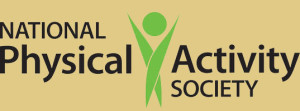What does a public health physical activity specialist do?
The physical activity specialist is a technical expert and convener, working with partners inside and outside of government to address conditions that support physical activity. Some of these conditions are pedestrian and bicyclist access place to place within communities, worksite policies and improvements, safe routes to schools and parks, or initiatives with healthcare groups to prescribe physical activity. The local interpretation of the physical activity specialist’s job will depend on consensus plans developed with community engagement to address barriers and facilitators for physical activity. As with other leadership roles in public health, an effective response to the issue of physical inactivity requires capacity to assess health status and resources; to develop partnerships, plans, and policies to meet needs; to assure that plans and policies are implemented effectively; and to evaluate plans and policies to create a continuous cycle of improvement. Physical activity prevents and delays chronic conditions such as diabetes, heart disease, and some cancers. Physical activity also aids pain management and rehabilitation. The US Physical Activity Guidelines lay out extensive detail on these issues. The physical activity specialist guides the planning and policy formation that enable health behaviors that improve these conditions among a population.
See also this blog post on PA practitioners.
PAPHS Certification
The ACSM/NPAS Physical Activity in Public Health Specialist (PAPHS) credential is an assurance for hiring managers of the skills needed for public health physical activity coordinators (or related job titles). Certified professionals can effectively plan, implement, and evaluate population-based physical activity interventions.
Sample Job Description
For state and local health departments, along with others hiring physical activity professionals using public health approaches: Role PAPH job description
Strategies of the National Physical Activity Plan will be particularly helpful to new PAPH practitioners getting started:
NATIONAL PHYSICAL ACTIVITY PLAN
The U.S. National Physical Activity Plan is a comprehensive set of policies, programs, and initiatives designed to increase physical activity in all segments of the U.S. population. The Plan aims to foster a national culture that supports physically active lifestyles. Its ultimate purpose is to improve health, prevent disease and disability, and enhance quality of life. The Plan was developed through a process that engaged hundreds of professionals, researchers, and leaders from public and private organizations. National Physical Activity Plan Alliance (NPAPA) Alliance is a coalition of national organizations that have come together to ensure that efforts to promote physical activity in the American population will be guided by a comprehensive, evidence-based strategic plan. The National Physical Activity Society is a board member of the National Physical Activity Plan Alliance.
National Physical Activity Plan | Public Health Sector Strategies
STRATEGY 1
Public health organizations should develop and maintain a workforce with competence and expertise in physical activity and health and that has ethnic, cultural, and gender diversity.
STRATEGY 2
Public health agencies should create, maintain, and leverage cross-sectoral partnerships and coalitions that implement evidence-based strategies to promote physical activity.
STRATEGY 3
Non-profit public health organizations should engage in policy development and advocacy to elevate the priority of physical activity in public health practice, policy, and research.
STRATEGY 4
Public health agencies should expand monitoring of policy and environmental determinants of physical activity and the levels of physical activity in communities (surveillance), and should monitor implementation of public health approaches to promoting active lifestyles (evaluation).
STRATEGY 5
Public health organizations should disseminate tools and resources important to promoting physical activity, including resources that address the burden of disease due to inactivity, the implementation of evidence-based interventions, and funding opportunities for physical activity initiatives.
STRATEGY 6
Public health agencies should invest equitably in physical activity, commensurate with its impact on disease prevention and health promotion.
 National Physical Activity Society missionNational Physical Activity Society the nation's voice for physical activity in public health
National Physical Activity Society missionNational Physical Activity Society the nation's voice for physical activity in public health